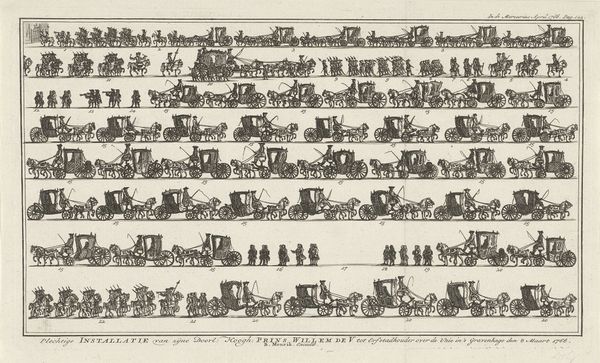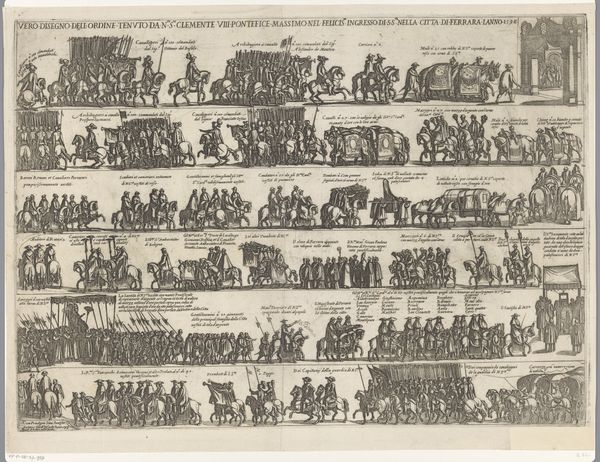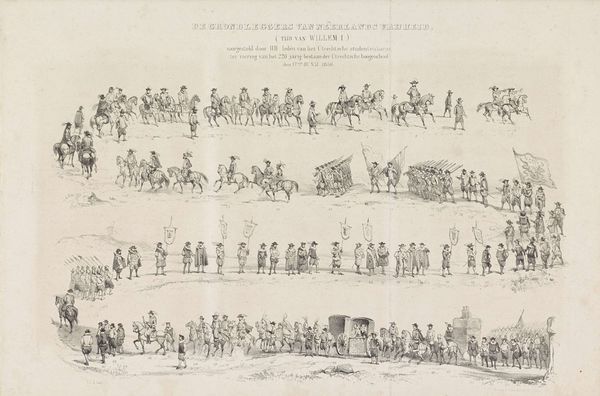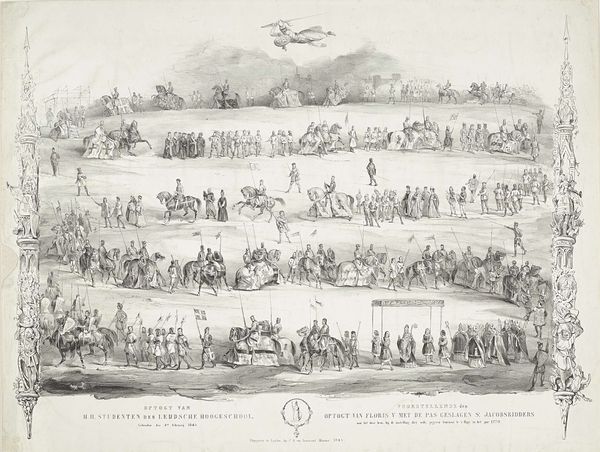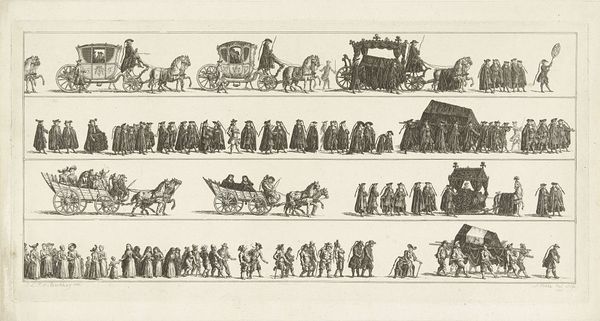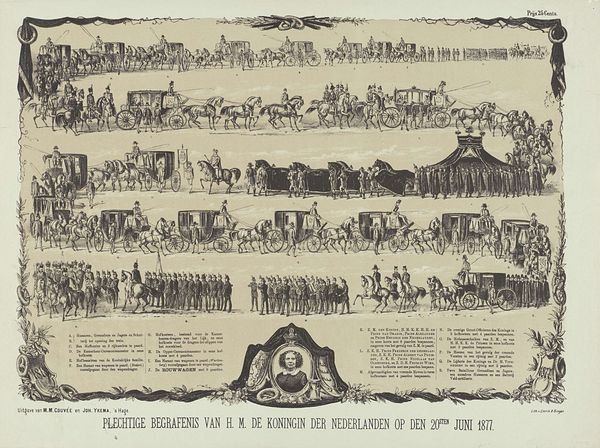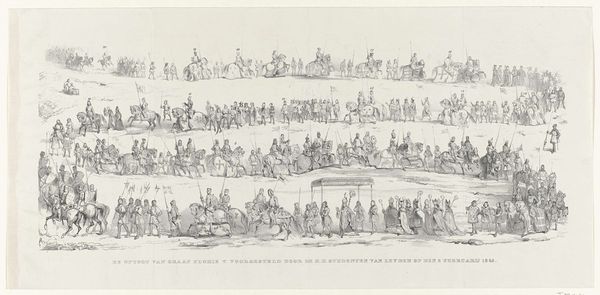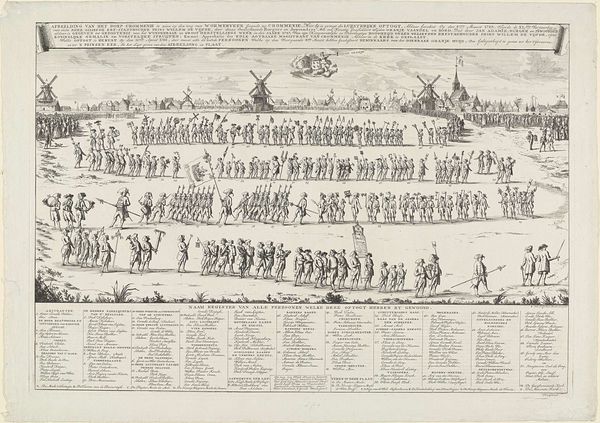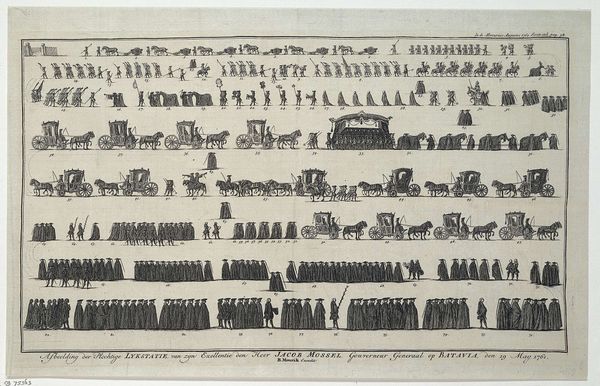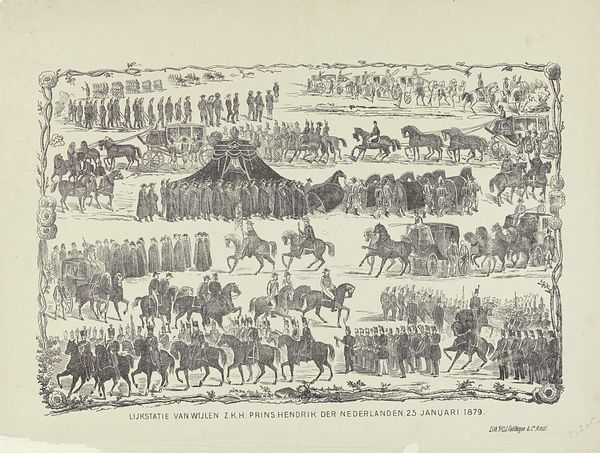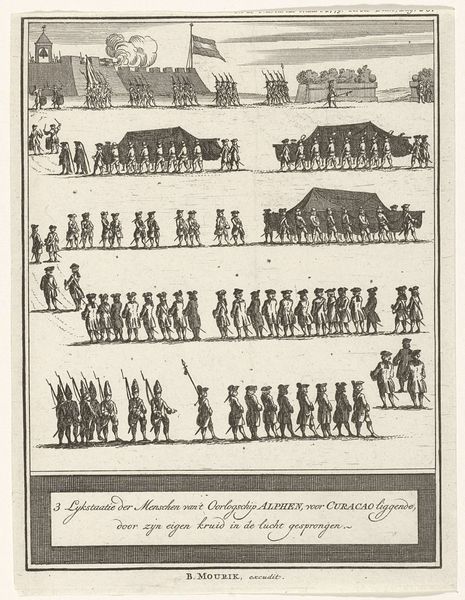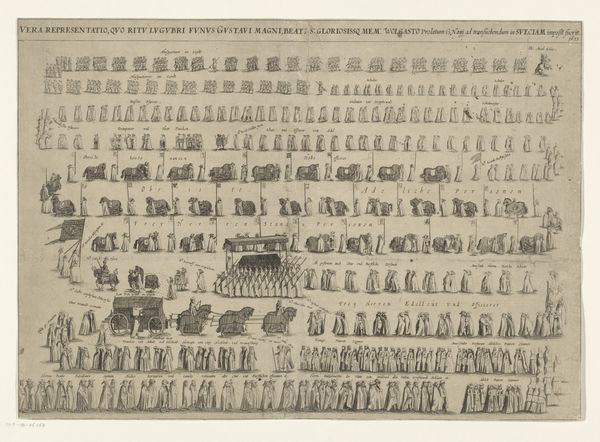
Begrafenisplechtigheid van H.K.H. Mevrouw de Prinses Frederik der Nederlanden, op Woensdag 21 December 1870 1870 - 1871
0:00
0:00
print, engraving
# print
#
old engraving style
#
line
#
cityscape
#
history-painting
#
engraving
#
realism
Dimensions: height 422 mm, width 575 mm
Copyright: Rijks Museum: Open Domain
Editor: This engraving from 1870, titled "Begrafenisplechtigheid van H.K.H. Mevrouw de Prinses Frederik der Nederlanden" by Gerard Jan Bos depicts a funeral procession. I'm immediately struck by the sheer scale and repetition of elements - horses, carriages, soldiers. What can you tell me about this print? Curator: This detailed engraving offers a rich study in production and social hierarchy. Consider the labor involved: the engraver's meticulous work translating the event into reproducible form, the artisans crafting the carriages, the breeding and training of the horses, and even the manufacturing of the uniforms. These are all products of specific industries and social classes, interwoven in this display of royal mourning. Editor: So, beyond just representing a funeral, you see it commenting on the structures of Dutch society at the time? Curator: Exactly. How many people were needed to manufacture these royal funerary tools? It reveals a complex network of material production, labor, and consumption propping up the monarchy, even in death. It's not just about high art, but about the physical means and labour it took to facilitate a system of government at this scale. Consider the cost of producing and maintaining this procession versus other contemporary methods of production, how the value system placed on Royal figure’s death influences art making during this time. Editor: That’s interesting. I hadn't considered how the artwork's very existence is tied to so much industrial output and human labor. Curator: Think of the paper itself! Its production is part of this story too. The materials, the craftsmanship, the scale – all contribute to understanding the values and social organisation inherent in this depiction of royal status. The artist meticulously traced the entourage to elevate Royal lineage through manufactured artwork. Editor: I now notice a complex and repetitive depiction and less an emotionally compelling or awe-inspiring piece. I had missed all of that initially. Thank you. Curator: Absolutely, by thinking about how artwork is produced, manufactured, consumed and circulated, we start to view works of art beyond mere aesthetic objects.
Comments
No comments
Be the first to comment and join the conversation on the ultimate creative platform.

